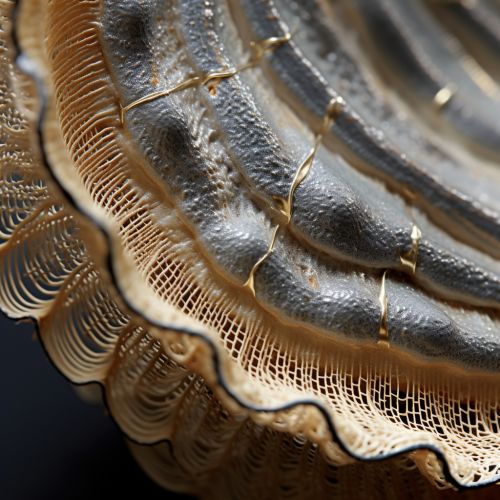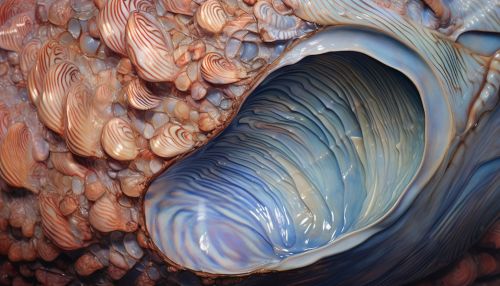Mantle (mollusc)
Anatomy and Structure
The mantle of a mollusc is a significant part of its anatomy, forming a protective layer over the soft body of the organism. This structure is composed of a thin sheet of tissue, known as the mantle skirt, which hangs down on each side of the body. The mantle is responsible for the secretion of the mollusc's shell, if it has one, and also plays a role in respiration, excretion, and sensory perception.


Function
The primary function of the mantle in molluscs is the secretion of the shell. The mantle tissue secretes calcium carbonate, which hardens to form the shell. This shell serves as a protective barrier against predators and environmental hazards. In addition to shell formation, the mantle also plays a role in the mollusc's respiration. In many species, the mantle acts as a respiratory surface, absorbing oxygen from the surrounding water or air. The mantle also assists in excretion, with waste products being expelled through the mantle cavity.
Shell Formation
The process of shell formation, or biomineralization, is a complex one, involving the secretion of calcium carbonate by the mantle. This process begins with the mantle secreting a protein matrix, onto which calcium ions are deposited. These ions then combine with carbonate ions in the water to form calcium carbonate, which hardens to form the shell. The mantle continues to secrete layers of calcium carbonate, allowing the shell to grow with the mollusc. The color and pattern of the shell are also determined by the mantle, with different species producing uniquely colored and patterned shells.
Respiration
In many molluscs, the mantle serves as a respiratory organ. The mantle tissue is rich in blood vessels, allowing for the efficient exchange of gases. In aquatic molluscs, the mantle absorbs oxygen from the water, which is then transported to the rest of the body by the circulatory system. In terrestrial molluscs, the mantle acts as a lung, absorbing oxygen from the air. The mantle cavity also plays a role in respiration, with water or air being drawn into the cavity and expelled, facilitating gas exchange.
Sensory Perception
The mantle of a mollusc also plays a role in sensory perception. In some species, the mantle edge contains sensory receptors that detect changes in the environment. These receptors can detect changes in light, temperature, and chemical composition, allowing the mollusc to respond to changes in its environment. In some species, the mantle also contains light-sensitive cells, providing the mollusc with a rudimentary sense of vision.
Evolution and Diversity
The mantle has evolved in various ways across the different classes of molluscs. In some species, the mantle has developed into complex structures, such as the siphon in cephalopods, which is used for jet propulsion. In others, the mantle has evolved to produce shells of varying shapes, sizes, and colors, contributing to the vast diversity of molluscs. The evolution of the mantle and its associated structures has played a significant role in the adaptability and success of molluscs in a wide range of environments.
